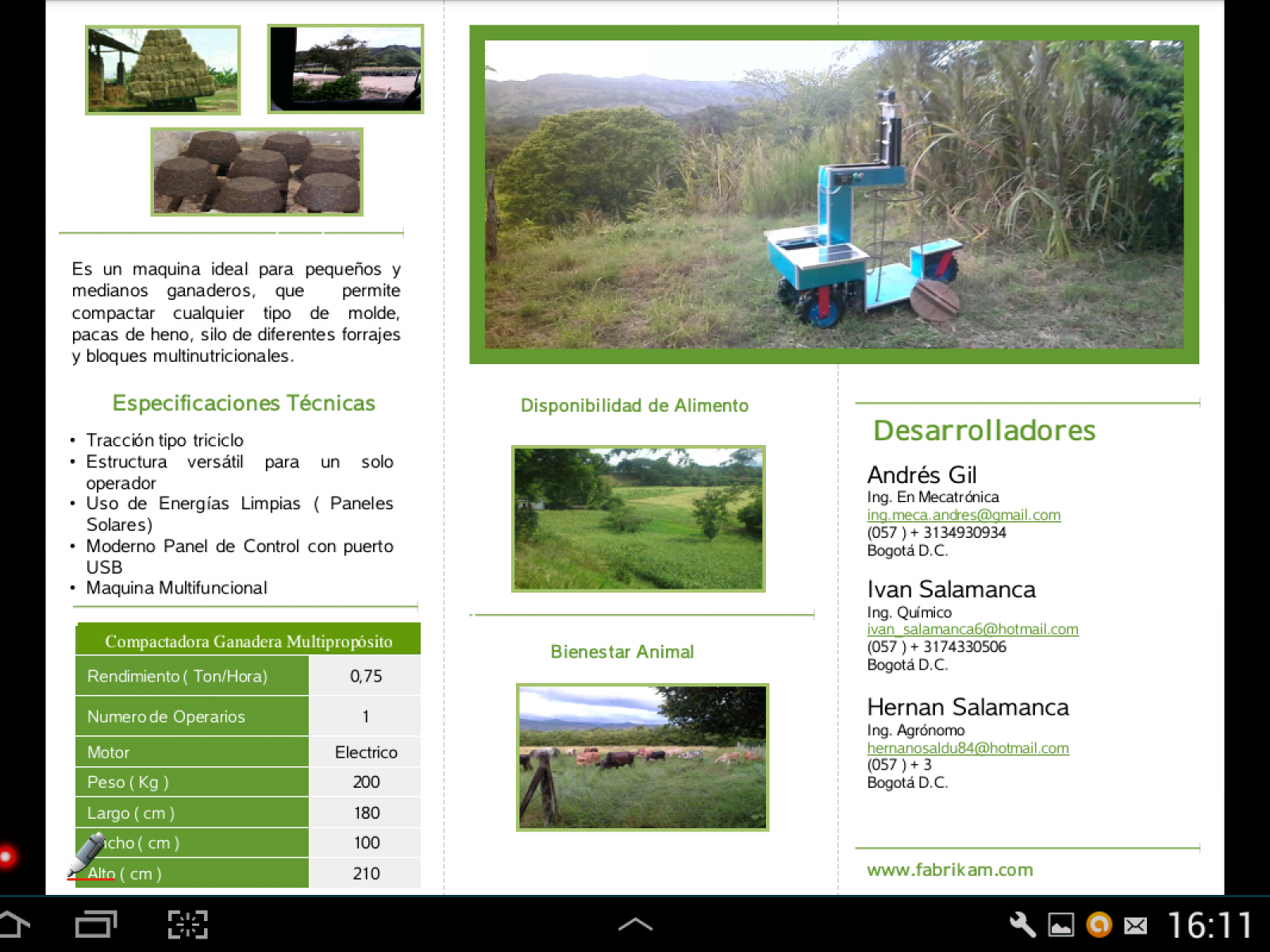An Overview Of Our Solution
- Population Impacted:
- Continent: South America
Organization type
Population impacted
Size of agricultural area
Production quantity
People employed
Describe your solution
Describe your implementation
External connections
What is the environmental or ecological challenge you are targeting with your solution?
Describe the context in which you are operating
The beneficiaries of our activity are the little and medium livestockers (less than 50 cows per farm) affected in their productive system by the inclement caused by longer and disordered wet and dry seassons (direct effects of climatic change). The beneficiares need friendly, cheap and efficient tools that let them to be more profiatable and less harmful with the environment. According to Fedegan's (national federation of livestockers of Colombia) census of little and medium livestocker affected by weather calamities in 2010, and 33.000 dead cows in the 2015. Our project could benefit a large percentage of the 11200 producers reported as affected.
How did you impact natural resource use and greenhouse gas emissions?
Language(s)
Social/Community
Water
Food Security/Nutrition
Economic/Sustainable Development
Climate
Sustainability
In the point of view of producer, with an small investment for two machines, the livestocker can have the tools for produce food in the rain and the hot season, with silages and hayne. Actually the conservative grass methods has higth cost for small farms, its necesary a tractors, implements and several machines. With food available, the producer will dont sell animals by low cost, or lose them by death. In and other hand, its possible to increase the production in the bad and good climatic seasons.
Return on investment
Entrant Image

Entrant Banner Image

